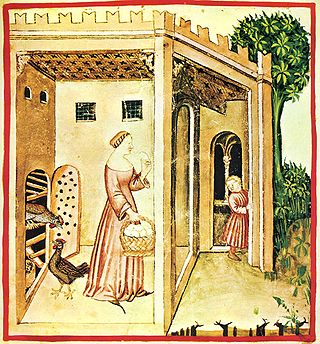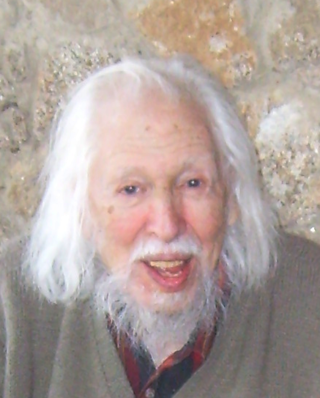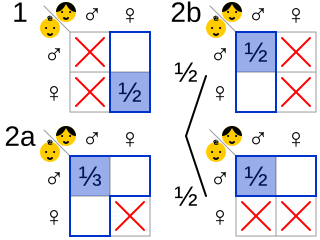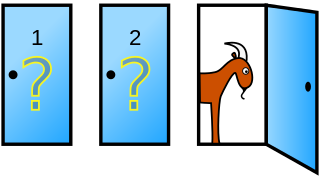
Samuel Loyd was an American chess player, chess composer, puzzle author, and recreational mathematician. Loyd was born in Philadelphia but raised in New York City.

The chicken or the egg causality dilemma is commonly stated as the question, "which came first: the chicken or the egg?" The dilemma stems from the observation that all chickens hatch from eggs and all chicken eggs are laid by chickens. "Chicken-and-egg" is a metaphoric adjective describing situations where it is not clear which of two events should be considered the cause and which should be considered the effect, to express a scenario of infinite regress, or to express the difficulty of sequencing actions where each seems to depend on others being done first. Plutarch posed the question as a philosophical matter in his essay "The Symposiacs", written in the 1st century CE.

Raymond Merrill Smullyan was an American mathematician, magician, concert pianist, logician, Taoist, and philosopher.
In philosophy and mathematics, Newcomb's paradox, also known as Newcomb's problem, is a thought experiment involving a game between two players, one of whom is able to predict the future.
A puzzle is a game, problem, or toy that tests a person's ingenuity or knowledge. In a puzzle, the solver is expected to put pieces together in a logical way, in order to arrive at the correct or fun solution of the puzzle. There are different genres of puzzles, such as crossword puzzles, word-search puzzles, number puzzles, relational puzzles, and logic puzzles. The academic study of puzzles is called enigmatology.
Marilyn vos Savant is an American magazine columnist who has the highest recorded intelligence quotient (IQ) in the Guinness Book of Records, a competitive category the publication has since retired. Since 1986, she has written "Ask Marilyn", a Parade magazine Sunday column wherein she solves puzzles and answers questions on various subjects, and which popularized the Monty Hall problem in 1990.
Mathematical puzzles make up an integral part of recreational mathematics. They have specific rules, but they do not usually involve competition between two or more players. Instead, to solve such a puzzle, the solver must find a solution that satisfies the given conditions. Mathematical puzzles require mathematics to solve them. Logic puzzles are a common type of mathematical puzzle.

The wolf, goat and cabbage problem is a river crossing puzzle. It dates back to at least the 9th century, and has entered the folklore of several cultures.

The two envelopes problem, also known as the exchange paradox, is a paradox in probability theory. It is of special interest in decision theory and for the Bayesian interpretation of probability theory. It is a variant of an older problem known as the necktie paradox. The problem is typically introduced by formulating a hypothetical challenge like the following example:
Imagine you are given two identical envelopes, each containing money. One contains twice as much as the other. You may pick one envelope and keep the money it contains. Having chosen an envelope at will, but before inspecting it, you are given the chance to switch envelopes. Should you switch?

The Boy or Girl paradox surrounds a set of questions in probability theory, which are also known as The Two Child Problem, Mr. Smith's Children and the Mrs. Smith Problem. The initial formulation of the question dates back to at least 1959, when Martin Gardner featured it in his October 1959 "Mathematical Games column" in Scientific American. He titled it The Two Children Problem, and phrased the paradox as follows:
MindTrap is a series of lateral thinking puzzle games played by two individuals or teams. Invented in Canada, it is the main product of MindTrap Games, Inc., who license the game for manufacture by various companies including Outset Media, Blue Opal, the Great American Puzzle Factory, Pressman Toy Corporation, Spears Games and Winning Moves.

The Monty Hall problem is a brain teaser, in the form of a probability puzzle, based nominally on the American television game show Let's Make a Deal and named after its original host, Monty Hall. The problem was originally posed in a letter by Steve Selvin to the American Statistician in 1975. It became famous as a question from reader Craig F. Whitaker's letter quoted in Marilyn vos Savant's "Ask Marilyn" column in Parade magazine in 1990:
Suppose you're on a game show, and you're given the choice of three doors: Behind one door is a car; behind the others, goats. You pick a door, say No. 1, and the host, who knows what's behind the doors, opens another door, say No. 3, which has a goat. He then says to you, "Do you want to pick door No. 2?" Is it to your advantage to switch your choice?

The nine dots puzzle is a mathematical puzzle whose task is to connect nine squarely arranged points with a pen by four straight lines without lifting the pen.

Sideways Arithmetic From Wayside School is a children's novel by Louis Sachar in the Wayside School series. The book contains mathematical and logic puzzles for the reader to solve, presented as what The New Yorker called "absurdist math problems." The problems are interspersed with characteristically quirky stories about the students at Wayside School.
Bertrand's box paradox is a veridical paradox in elementary probability theory. It was first posed by Joseph Bertrand in his 1889 work Calcul des Probabilités.
The Hardest Logic Puzzle Ever is a logic puzzle so called by American philosopher and logician George Boolos and published in The Harvard Review of Philosophy in 1996. Boolos' article includes multiple ways of solving the problem. A translation in Italian was published earlier in the newspaper La Repubblica, under the title L'indovinello più difficile del mondo.

The eureka effect refers to the common human experience of suddenly understanding a previously incomprehensible problem or concept. Some research describes the Aha! effect as a memory advantage, but conflicting results exist as to where exactly it occurs in the brain, and it is difficult to predict under what circumstances one can predict an Aha! moment.
Maya Bar-Hillel is a professor emeritus of psychology at the Hebrew University of Jerusalem. Known for her work on inaccuracies in human reasoning about probability, she has also studied decision theory in connection with Newcomb's paradox, investigated how gender stereotyping can block human problem-solving, and worked with Dror Bar-Natan, Gil Kalai, and Brendan McKay to debunk the Bible code.

A vanishing puzzle is a mechanical optical illusion comprising multiple pieces which can be rearranged to show different versions of a picture depicting several objects, the number of which depending on the arrangement of the pieces.











